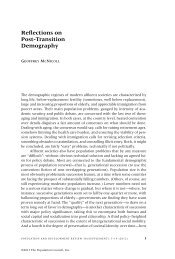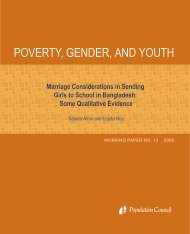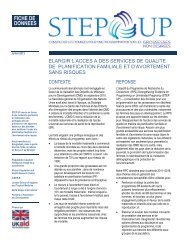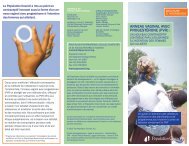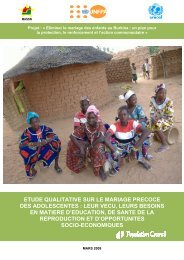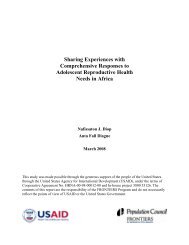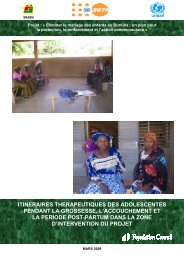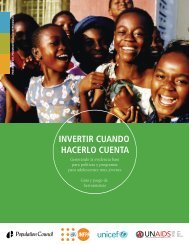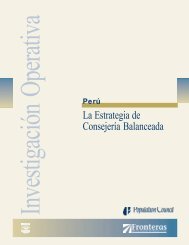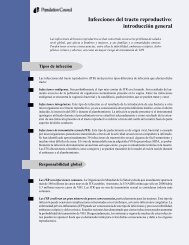Community Health Volunteer's Training Manual - Population Council
Community Health Volunteer's Training Manual - Population Council
Community Health Volunteer's Training Manual - Population Council
You also want an ePaper? Increase the reach of your titles
YUMPU automatically turns print PDFs into web optimized ePapers that Google loves.
Module 2 <strong>Community</strong> Mobilisation and Tools<br />
94<br />
Box 2.1.2: A typical community profile should contain the following:<br />
• Name of community<br />
• Name of sub-district in which community/zone is located<br />
• Name of district<br />
• Name of CHPS zone under which it is<br />
• Name of communities/ villages or settlements making up the community<br />
• Brief description of landscape and vegetation<br />
• <strong>Population</strong> of community or member villages<br />
• Main customs and beliefs of the people<br />
• Ethnic groupings<br />
• Economic activities – sources of income<br />
• Economic facilities – markets, shops, etc<br />
• Predominant religious groupings<br />
• Housing; nature and pattern of housing<br />
• <strong>Health</strong> facilities – clinics, health posts, chemical shops, etc.<br />
• Disease patterns, sickness and health behaviour<br />
• Schools and other educational facilities<br />
• Forms of transportation and communication<br />
• Water and sanitation facilities.<br />
Topic 2 <strong>Community</strong> mapping<br />
In our classrooms, we may find the map of Ghana or Africa, and sometimes our district<br />
maps. A map is a drawing of an area or a structure showing the important features. We use it<br />
to know what is situated where and what to build where. For example, we may have a map of<br />
a house, a community, a country or other places. Often a map is drawn on a sheet of paper.<br />
Just looking at the sheet you can identify most of the things in the area or the structure.<br />
As volunteers you will find maps useful in many ways. For example, you will be able to locate<br />
the refuse dump, school, health facility, ponds and water ways. What other ways are maps<br />
useful? How are they drawn? You will draw maps and these will help you in your work. Let’s<br />
do an exercise and use it to answer our questions. Exercise 2.1.2<br />
Mapping may also be a process for showing interrelationships such as shown in Figure 2.1.1<br />
Figure 2.1.1: A group sketch showing the various<br />
factors that influence health workers. Asketch<br />
produced by a group



